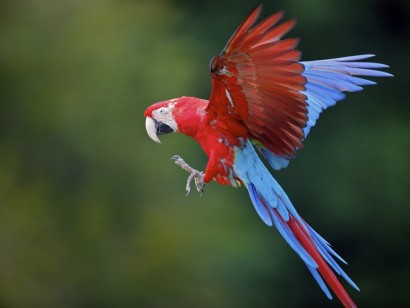Costa Rica Birding Tour
Highlights
Highlights
- Lots of high quality, exciting birding in relatively easy conditions
- Amazingly high diversity in such a small area, in comfortable surroundings and protected areas
- Expect 400+ bird species
Map
Map
Overview
Tour Overview
Costa Rica – the Rich Coast! Over 870 species of birds have been recorded from this small country, renowned for relatively easy birding, comfortable accommodation, good infrastructure, and peaceful policies. Costa Rica with western Panama is a major centre of avian endemism, with nearly 70 species found nowhere else! Our Costa Rica birding tour visits all major habitats, sampling an astonishing variety of birds. We bird amazing Carara and Rio Tarcoles, which offer some of the best birding in the whole country. We visit cloud forests at Tapanti Reserve and high elevation forests and paramo of Cerro de la Muerte in search of Resplendent Quetzal, Silver-throated Jay and many others.
From the high mountains we descend to the incredibly bird-rich foothills of Braulio Carillo and La Selva which has some of the best Caribbean lowland forest remaining in Costa Rica with many unique birds for a whole new suite of birds. We finish on the slopes of the iconic Arenal volcano with antbird flocks, toucans, cotingas, owls and so much more. As many participants comment, each day is better than the last!
Dates & Prices
DATES & PRICES
What's Included
What's Included
Tour Price Includes
- All accommodation (basic to very good accommodation)
- All meals
- Ground transportation (Air-conditioned bus with driver)
- 1 guide with 4 - 8 participants, 2 guides with 9 - 12
- All park, conservation and entrance fees
Tour Price Does Not Include
- Flights to and from San Jose
- Travel Insurance
- Items of a personal nature
Gallery
Gallery
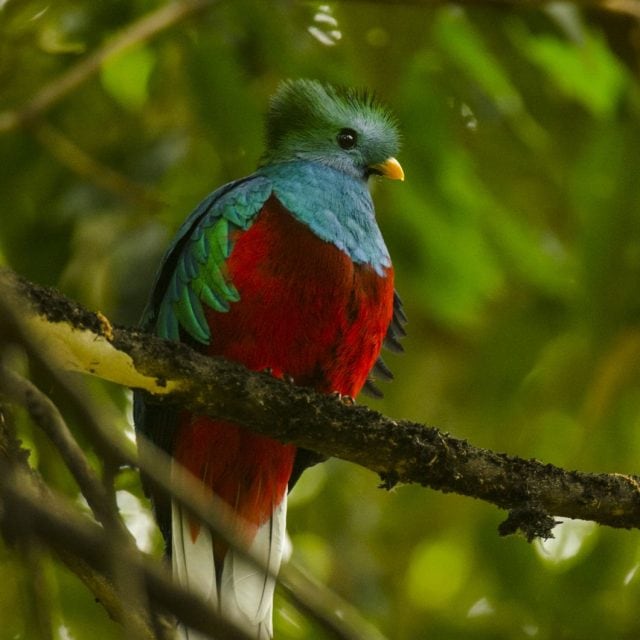
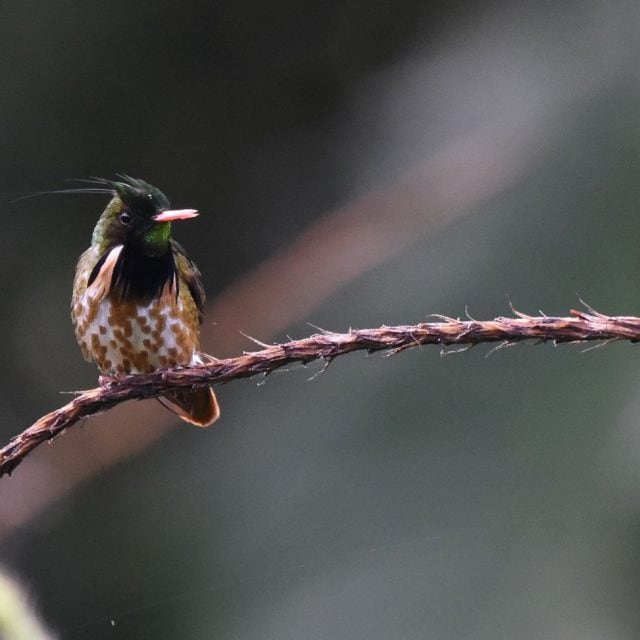


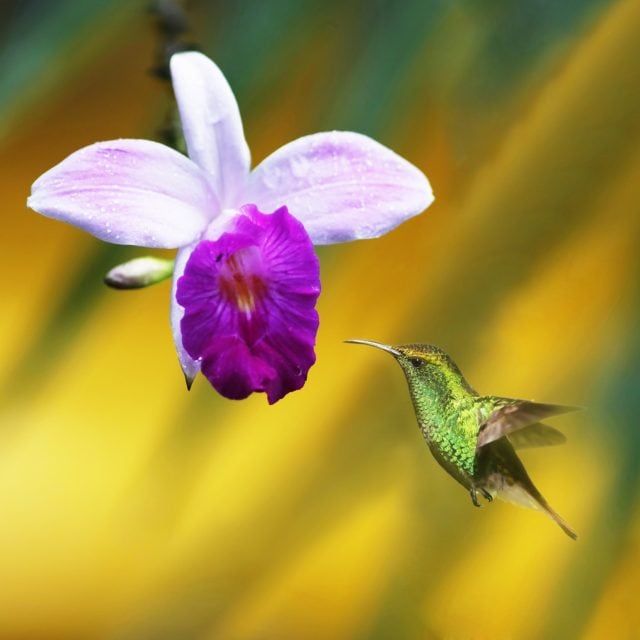


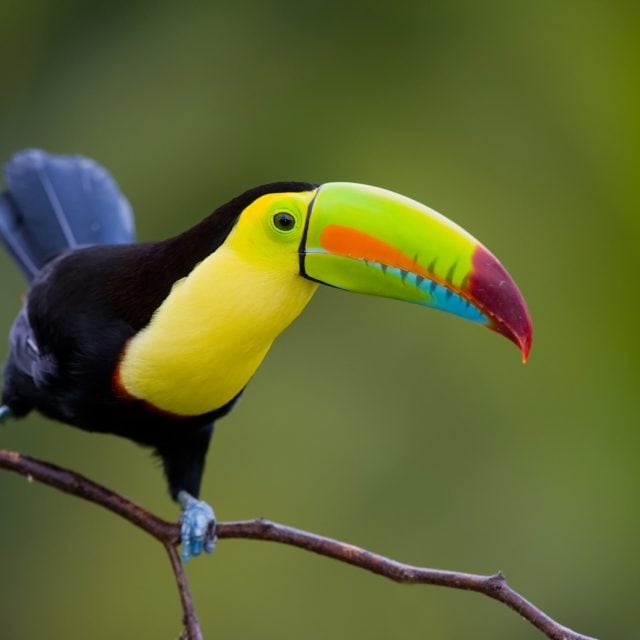
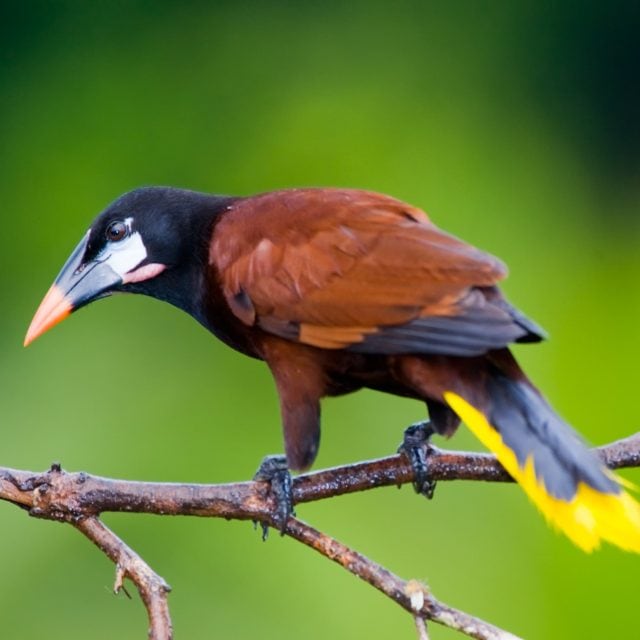
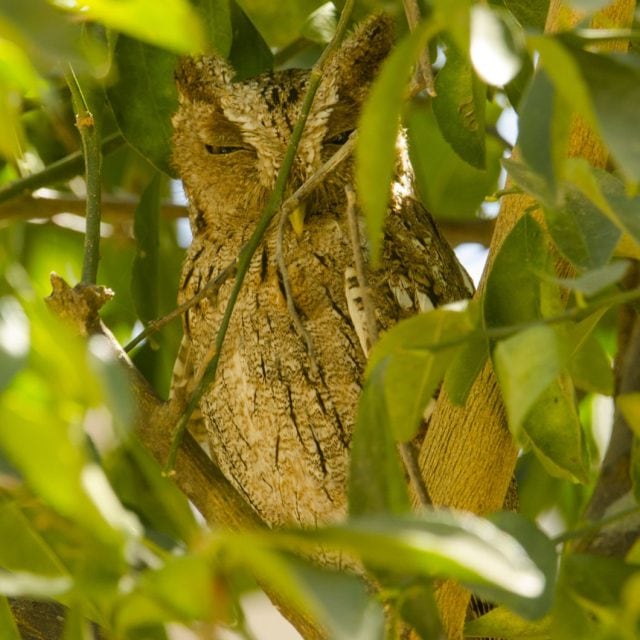


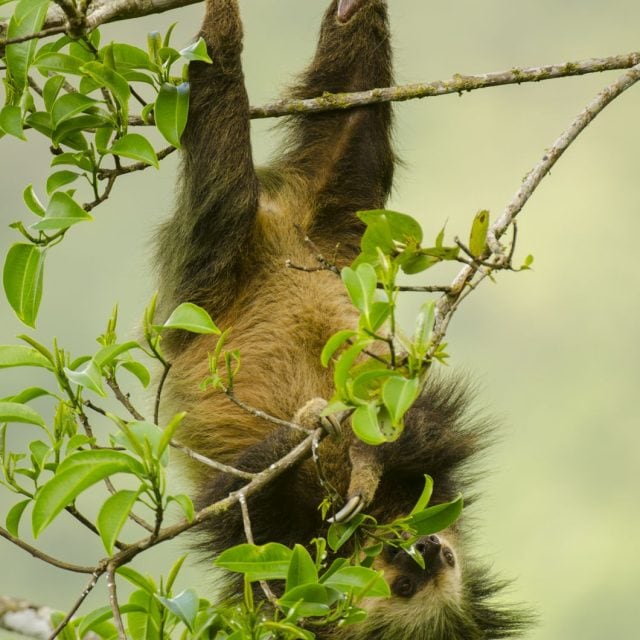
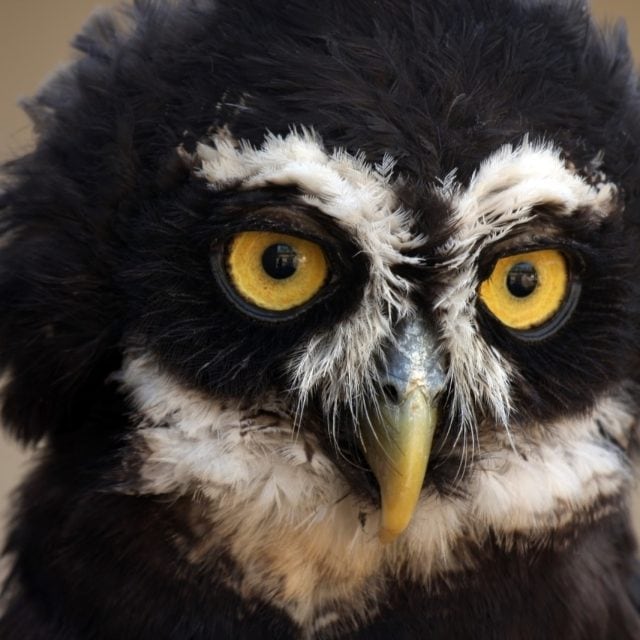
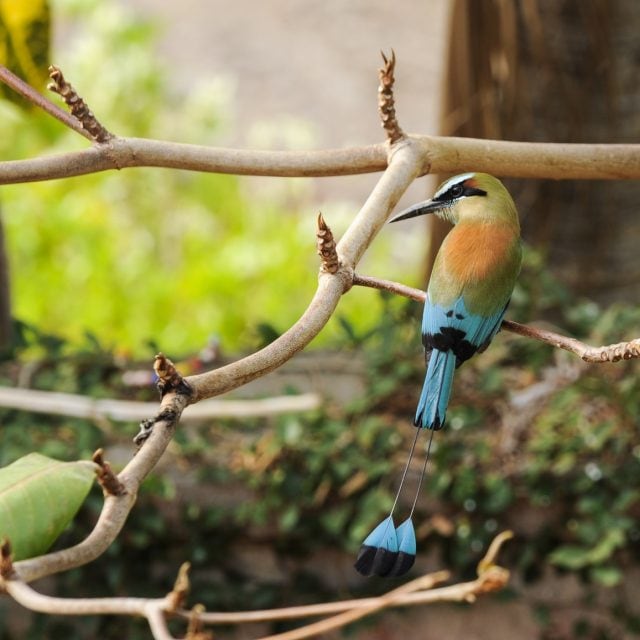
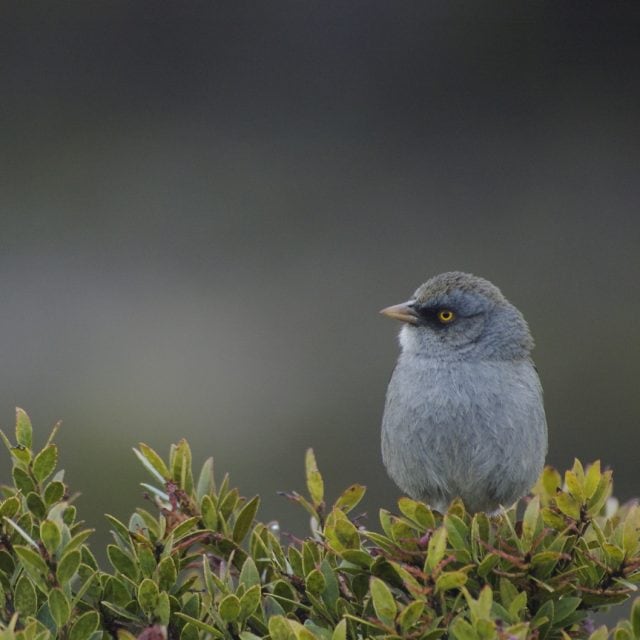
Itinerary
Day 1: Arrival in San José
Our Costa Rica birding tour begins with dinner and an orientation at our hotel. Participants arriving early can enjoy the beautiful hotel grounds, possibly finding Blue-crowned Motmot and several other species on the hotel grounds. Night in San José.
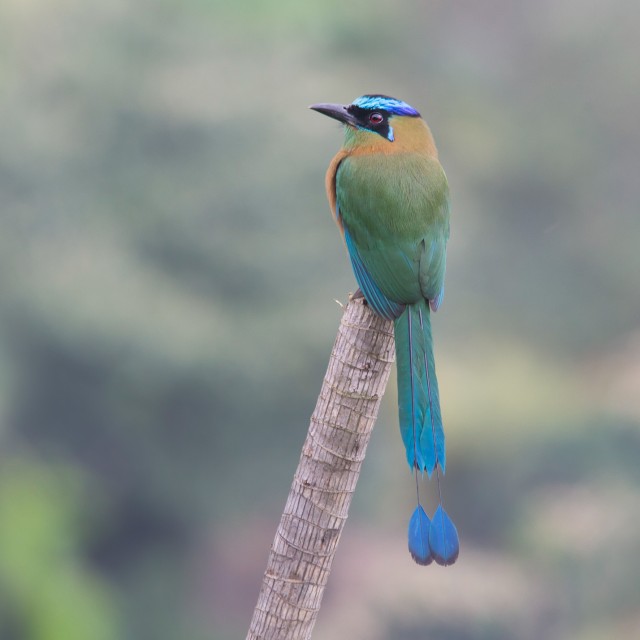
Day 2: Transfer to Carara
After an early walk around the hotel gardens, we head west to the Pacific coast and Carara National Park. This is the boundary between the tropical dry forest to the north and the tropical wet forest to the south. Consequently, it is incredibly diverse. We arrive in time for an afternoon outing to get familiar with some of the dry forest species, including Rufous-naped Wren, Yellow-naped Parrot, Turquoise-browed Motmot, Cinnamon Hummingbird, Scrub Euphonia, and the incredible Scarlet Macaw. Night near Carara National Park.

Days 3 & 4: Carara National Park
Carara National Park preserves a large tract of beautiful and bird-rich tropical semi- evergreen forest. It is an amazing place and birding can be marvelous. The site offers a wonderful array of woodcreepers, trogons, and manakins including the stunning Orange-collared, likely displaying when we are there. We could see several species of woodpeckers, flycatchers, antbirds, antwrens and antpittas— the possibilities seem endless! We may find American Pygmy Kingfisher by a woodland pool, or a Boat-billed Heron perched in a tree along the lagoon, or a Long-billed Gnatwren busily hunting insects—or a troop of coatimundis seemingly oblivious to our presence. We look for Baird’s Trogon, Black-hooded, Giant and Barred Antshrikes, Yellow-billed Cotinga, Golden-crowned Spadebill, and many more. We enjoy a boat trip in the mangroves along the Rio Tárcoles to look for the endemic Mangrove Hummingbird, Panama and Northern Scrub Flycatchers, Mangrove Black Hawk, and shorebirds and waders such as Roseate Spoonbill. We stay at a hotel only a few minutes from the preserve. We will also stop at a spot to watch American Crocodiles loaf along the river bank. Night near Carara National Park.
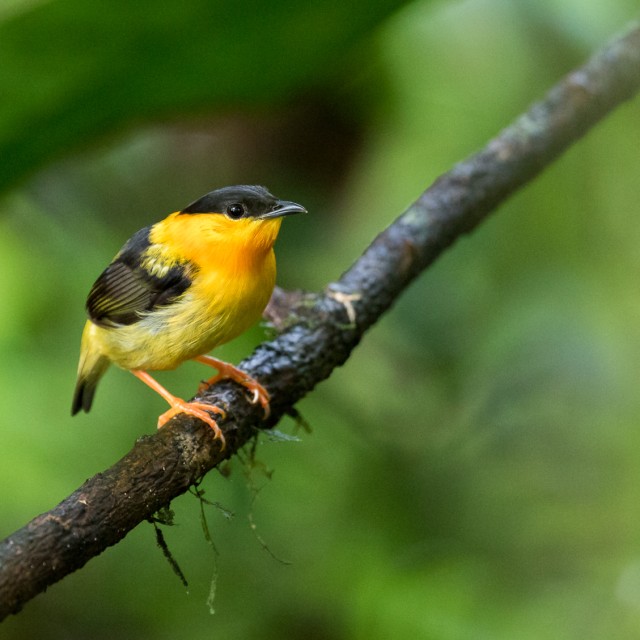
Day 5: Carara to San Isidro El General
We leave Carara early and drive south along the Pacific Coast. We make several stops on our way, keeping an eye out for specialties such as Snowy-bellied Hummingbird and Fiery-billed Aracari, we could encounter species such as Red-crowned Woodpecker, Pearl Kite and American Swallow-tailed Kite, whilst offshore Brown Boobies should be fishing. Leaving the coast we drive inland to San Isidro del General and onto our hotel. Here we encounter yet another suite of birds, such as Smooth-billed Ani, Orange-billed Nightingale-Thrush, Lesser Elaenia, Cherrie’s Tanager and Streaked Saltator, and a major attraction of this area, Turquoise Cotinga. Night in San Isidro El General.

Day 6: South Pacific
We start the day by visiting Los Cusingos, the name of Alexander Skutch’s farm, where we walk trails in the still relatively pristine lowland forest. There are many exciting possibilities here – Great Tinamou, Charming Hummingbird, White-crested Coquette, Bright-rumped Attila, Plain and Riverside Wrens, Golden-crowned Spadebill, Orange-collared, Blue-crowned and Red-capped Manakins, Baird’s and Black-headed Trogons, Dot-winged Antwren and Long-billed Gnatwren. Black-striped Sparrows sing their bouncing ball song, Orange-billed Sparrows forage in brush piles, Gray-necked Wood-Rails call from wet pastures, and Long-billed Starthroats visit tubular flowers. We look for ant swarms, which usually have several species in attendance – Gray-headed Tanager, woodcreepers including Cocoa, Tawny-winged and Ruddy, antbirds including Chestnut-backed and Bicoloured, even Roadside Hawk.
We spend the rest of the day searching for specialties here in the South Pacific lowlands. Flocks of swifts including White-collared, Chestnut-collared and Spot-fronted wheel across the sky, as does the solitary Lesser Swallow-tailed Swift. Olivaceous Piculets forage on thin branches, Garden Emeralds visit flowering trees, and we look for Yellow-green Vireo, Yellow-crowned and Spot-crowned Euphonias, Gray-headed Chachalaca, White-crowned Parrot, Tropical Gnatcatcher, Rufous-browed Peppershrike, Greenish and Yellow-bellied Elaenias, the superb Speckled Tanager and Blue Dacnis. Night in San Isidro El General.
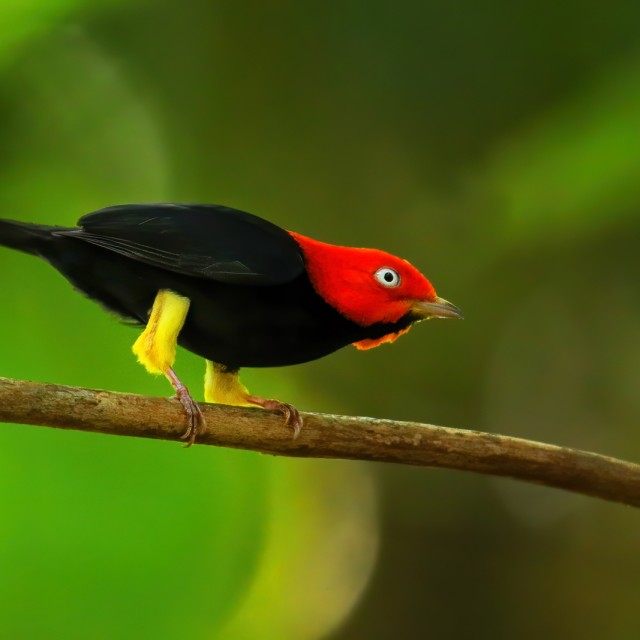
Day 7: Transfer to the Talamanca Highlands
This morning we head off to the cloud forest and páramo of the Cordillera de Talamanca. Along the way we stop at locations for White-tailed Emerald, Fiery-throated Hummingbird and Red-headed Barbet, and visit the high paramo of Cerro de la Muerte for Volcano Junco and Timberline Wren. Then it is off our hotel in the highlands. Night in the San Gerardo de Dota area.
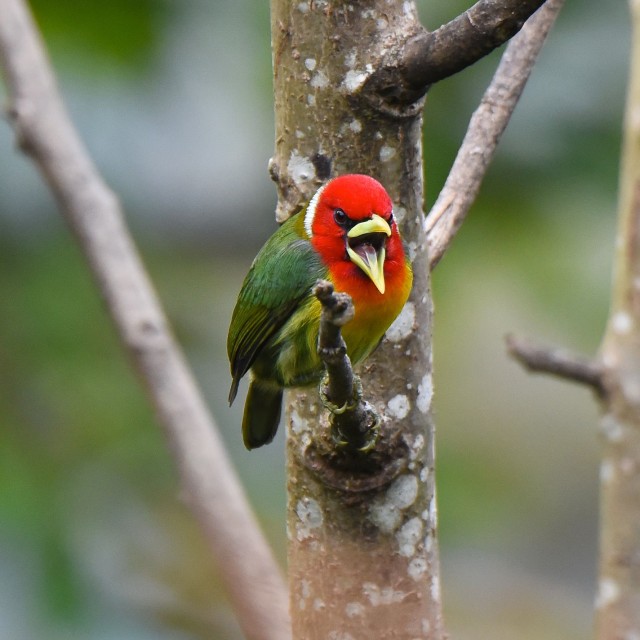
Day 8: Cordillera de Talamanca
Here, along dirt roads and forest trails passing among trees draped in epiphytes, we find a new suite of birds such as Ruddy Treerunner, Buffy Tuftedcheek, Black-capped Flycatcher, Long-tailed Silky-Flycatcher, Collared Redstart, Large-footed Finch, with luck Silvery-throated Jay. Our primary target is the magnificent Resplendent Quetzal, certainly one of the most beautiful birds in the world. Night Night in the San Gerardo de Dota area.
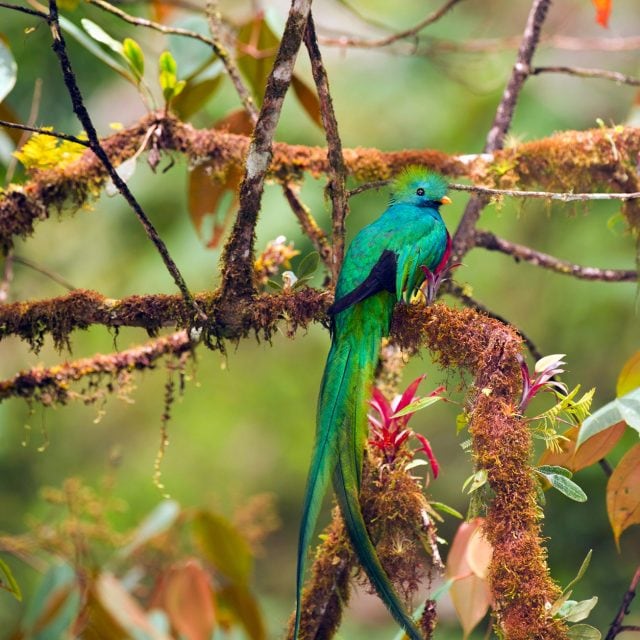
Day 9: Highlands to Orosi
We leave the highlands in the morning, stopping at La Providencia for possible Black-and-yellow Silky-Flycatcher and Wrenthrush, and head down to the town of Paraiso to tour an organic coffee farm for a quick tour of the premises, a cup of coffee, and some species we may have missed up to now – perhaps Crimson-collared Tanager, Buff-throated, Black-headed and Greyish Saltators, White-naped Brush-Finch, White-eared Ground-Sparrow, Orange-billed Nightingale-Thrush and Garden Emerald. We then head to the nearby town of Orosi. Night near Orosi.
Day 10: Tapantí National Park and on to the Caribbean lowlands
We depart early for the Tapantí Reserve. The Reserve is a great example of middle to high elevation Caribbean forest, and we look for Black Guan, Brown-billed Scythebill, Streak-breasted Treehunter, Black-bellied Hummingbird, Green-fronted Lancebill and Chestnut-headed Oropendola along with Golden-bellied Flycatcher, Common Bush-Tanager, Spangle-cheeked Tanager, Slate-throated Redstart and Prong-billed Barbet. After a productive morning, we head further downslope, but travel via magnificent Braulio Carrillo National Park. At a vervain hedge, we look for Violet-headed Hummingbird, and with great luck Snowcap. In the park, we walk trails looking for specialties such as Lattice-tailed Trogon, Ornate Hawk-Eagle, Black-headed Nightingale-Thrush, Black-and-yellow Tanager, and several antbirds and antwrens. Night at La Quinta Sarapiquí Lodge.

Day 11: Caribbean Lowlands
We make the lodge our central point for birding several diverse locations in some of the richest areas in Costa Rica. During our stay, we visit La Selva, a wonderful tract of wet lowland rainforest where some 400 species of birds have been reported. We’ll see a fine array of neotropical fauna—tinamous, motmots, puffbirds, cotingas, trogons, toucans, chachalacas, maybe ant-followers at an ant swarm or a Great Curassow walking stealthily on the forest floor, lots of tanagers, as well as monkeys and who knows what else! We will also keep and eye and ear out for the endangered Great Green Macaw. Both its size and brilliant plumage make it a very impressive bird. Night at La Quinta Sarapiquí Lodge.

Day 12: Transfer to Caño Negro
After a final morning of birding, we head north toward the Caño Negro Wildlife Refuge near Costa Rica’s northern border. We will make a few opportunistic stops along the way before arriving at our hotel. The wetlands of this area provide refuge for large numbers of a multitude of species during the dry season and the wetlands have been recognized for their international importance. Night in Caño Negro.
Day 13: Caño Negro and transfer to Arenal
Our highlight today will be a morning boat tour on the river and wetlands of this area. We can expect to see an abundance of waterbirds, including Black-bellied Whistling-Ducks, several herons and egrets, up to five species of Kingfishers, and the massive Jabiru stork. We will also search for several other specialties of this area, including Black-collared Hawk, Nicaraguan Grackle, and Lesser Yellow-headed Vulture. After this delightful experience, we make our way to our home for the next three days on the slopes of the Arenal Volcano. Night at Arenal Observatory Lodge.
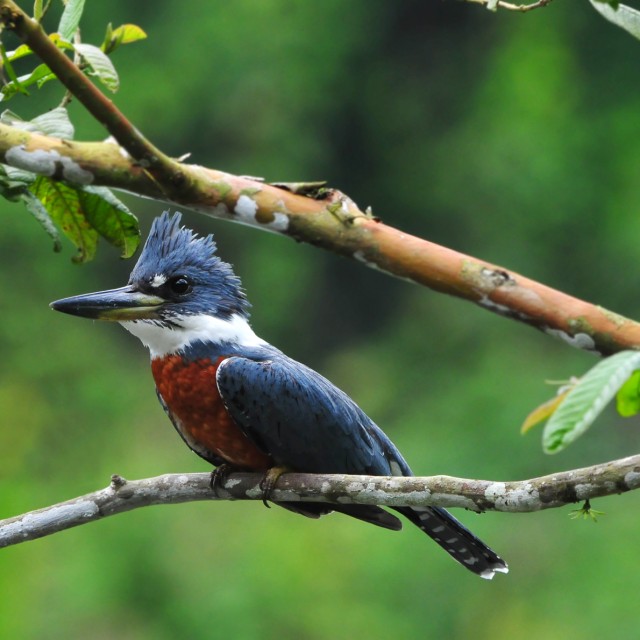
Day 14 & 15: Arenal area
The rainforest at the base of the volcano supports a rich assortment of birds typical of the Caribbean foothills and we should find colourful motmots, noisy raucous parrots in the upper canopy, trogons perched quietly at mid-canopy, Rufous-tailed Jacamars sallying out to catch butterflies, and spectacular Collared Aracaris and Keel-billed Toucans. Odd grunting noises come from Masked Tityras. Mammals include Three-toed Sloth and Spider Monkey. If it is clear, the view of the volcano is breathtaking!
We spend our days exploring the trails and along roads through forest and second-growth woodlands of this area, looking for Caribbean-slope specialties. If we are fortunate, we will encounter a swarm of army ants marching across the forest floor with their attendant army ant followers – antbirds, antshrikes, antwrens, woodcreepers, even hawks. White-necked Puffbirds and Long-tailed Tyrants may be perched conspicuously on exposed dead snags, manakins may be displaying at their leks on the forest floor, and mixed-species flocks could pass by with a dozen or more species in each flock - foliage-gleaners, flycatchers, dacnis, tanagers, warblers, woodpeckers and more. Nights at Arenal Observatory Lodge.

Day 16: Transfer from Arenal to San José
We spend a final morning enjoying the feeders and grounds of the lodge, we travel from Arenal down the Caribbean slope, across the lowlands and over the mountains to the Central Valley. There will be several key stops along the way depending on what we have seen so far. We may stop in at more hummingbird feeders for scarcer hummingbirds such as Coppery-headed Emerald, a Costa Rican endemic, and Purple-throated and White-bellied Mountain-Gems. We arrive at our charming hotel for a final dinner to celebrate a rewarding an productive journey through this beautiful country. Night near the San José airport.

Day 17: Departure
Our tour concludes today and you can transfer to the airport anytime today for flights home.
What to Expect
What to Expect
The daily travel schedule on our Costa Rica birding tour will vary to account for weather, bird species and habitat. Expect optional early morning, before-breakfast walks on most days, as well as late evening viewing. Almost without exception it is best to begin birding at daybreak in the tropics, when bird activity and song are at their peak. In forest regions, we concentrate on “edge” birding until the light is sufficient to enter forest trails. Often bird activity slackens off by noon, when we may return to our hotel for lunch and a short siesta. On occasion, picnic lunches will be prepared for us, maximizing our time in the field and allowing us a more flexible schedule.
We bird again in the coolness of the late afternoon, occasionally staying out after dusk to search for nightbirds. Weather conditions on the trip will range from hot to cool; mostly, it will be warm to hot with a mixture of sun and cloud. Our time at Carara National Park will be hot and dry. Cerro de la Muerte and our accommodation in the highlands at Paraiso Quetzal will be cool, and could be windy and wet. The Caribbean lowlands at La Selva are likely to be hot and humid. Walking conditions range from easy to moderate; if there has been rain, then trails could be muddy. Our maximum elevation on this tour is Cerro de la Muerte, where we drive up to 3,451 m (11,322 ft).
Strong, waterproof footwear is advised and a light rain-jacket and waterproof hat are often essential. There will be opportunities for photography, as many birds and other wildlife allow close approach and we visit several excellent feeder stations. Bring mosquito repellant - mosquitoes are not usually a problem but can be active after rain. In the evening we eat at the hotel or lodge where we are staying. At this time we discuss the day’s activities, review the list of birds and other wildlife that we have seen and heard, and prepare for the next day.
Tour Video
Tour Video
Watch more tour videos and subscribe to our YouTube Channel
More VideosFeatured Wildlife
Featured Wildlife
While we cannot guarantee sightings of the birds or mammals listed below, we believe that encountering these species is quite likely during this tour.
- Resplendent Quetzal
- Scarlet Macaw
- Coppery-headed Emerald
- Spectacled Owl
- Snowy-bellied Hummingbird
- Fiery-billed Aracari
- Volcano Junco
- Black-crested Coquette
- Turquoise-browed Motmot
- Black-hooded Antshrike
- Black-and-yellow Tanager
Past Tour Checklists
Past Tour Checklists
View the list of birds and other wildlife we encountered on our past tours.
- Costa Rica 2023 species list (ebird)
- Costa Rica 2020 species list
- Costa Rica 2019 species list
- Costa Rica 2016 species list
- Costa Rica 2015 species list
- See More...
- Costa Rica 2014 species list
- Costa Rica 2012 species list
- Costa Rica 2011 species list
- Costa Rica 2009 species list
- Costa Rica 2008 species list
- Costa Rica 2007 species list
- Costa Rica 2006 species list
- Costa Rica 2004 species list
- Costa Rica 2002 species list
Trip Reports & Inspiration
Trip Reports & Inspiration
Costa Rica Long 2023 Trip Report(Posted On April 3rd, 2023)
Top Birding Destinations to Escape Winter: Going south when the snow flies!(Posted On September 29th, 2022)
Best ways to find birds in the tropics(Posted On August 30th, 2022)
Costa Rica 2020 Trip Report(Posted On March 30th, 2020)
